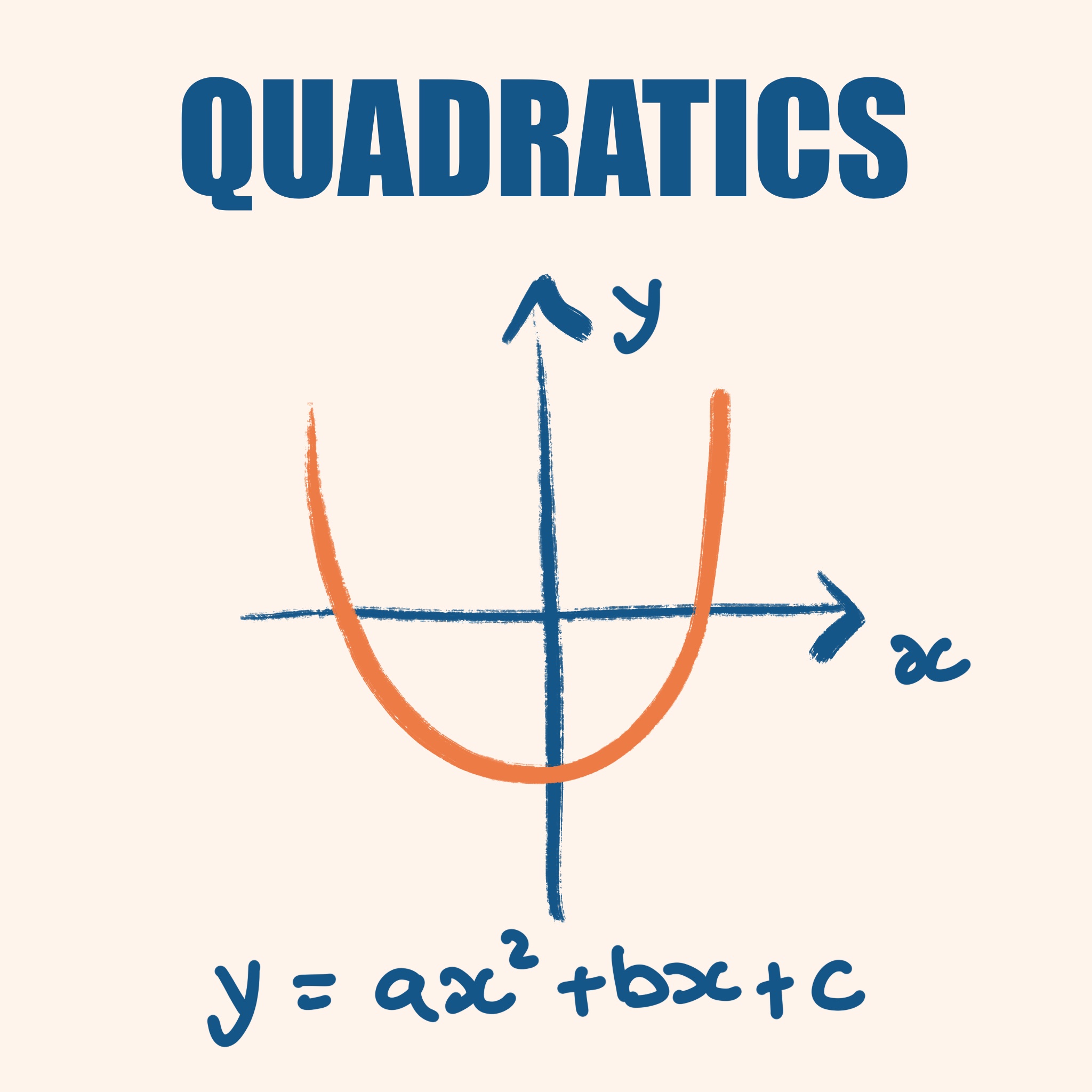Introduction
In math, there are different types of equations, e.g. linear, quadratic, cubic, exponential, circular, etc.

Quadratic just means that x2 is the highest power in the equation. In a linear equation, the highest power would just be x (equation of a line is y=mx+c). In a cubic equation, it’s x3. And so on…
“Quadratic” comes from the Latin word “Quadratus” which means “square”
So, the equation with “x squared” is quadratic.
All these different equations tell us about the relationship between x and y. For example, y=2x says “for every 2 x I have, I have 1 y.
x and y are just names for numbers that we don’t know. If you know the number for x, you can substitute in into the equation to find y. For example, if x = 2 then y is 4 ( y=2x=2(2)=4).
But we don’t have to use ‘x’ and ‘y’, we can call them anything. We can say x is apples and y is bananas. In this case, the equation says we have twice as many bananas as you do apples (for every apple, you have 2 bananas):
\text {bananas}=2\times \text {apples}
instead of
y=2\times x
This is an example of a linear relationship (following the linear equation).
Quadratic is just another relationship. For example, y=x^2+4x+4. If we have 2 apples, then we would have 16 bananas ( y=(2)^2+4(2)+4=4+8+4=16). This is a more complex relationship than the linear relationship, but it’s the same concept.
Graphs of quadratic equations
We can use graphs to visualize how these 2 variables relate to one another. For example, if we graph the equation y=x^2+4x+4, it will look like:

The line on the graph tells us what the y value is for a specific x value.
Now, let’s say again that x is the number of apples and y is the number of bananas. We’re told that we can find the number of bananas if we know the number of apples from the equation (same as the equation with the x’s and y’s):
\text {bananas}=\text {apples}^2+4\times \text {apples}+4
But instead of substituting in the number of apples to find the number of bananas, we can use the graph. Let’s say we want to know how many bananas we’ll have if we have 5 apples. Look for 5 on the x-axis. If you go to the line at that point and look for the corresponding y-value, that will tell you the number of bananas (or y).
So, the number of bananas is 49. Ie. if x is 5 then y is 49.
You may wonder, “but what if x is negative – we can’t have a negative number of apples”. In that case, we would specify the domain. The domain is just the possible x values that we can put into the equation. In this case, we would say the domain is x\geq 0 or “x can’t be negative”. I’ll go into more with this in the “functions” chapter.
When we use these kinds of equations in science, we would say that x is the “independent variable”, and y is the “dependent variable”. That’s because we usually don’t know what x is going to be. But we know the relationship between x and y (or in science, you’ll usually finding out the relationship). And depending on what the value of x is, the value of y will change according to the relationship that we define with the equation. So, y depends on x.
Next: Different forms of the quadratic equation






Leave a Reply